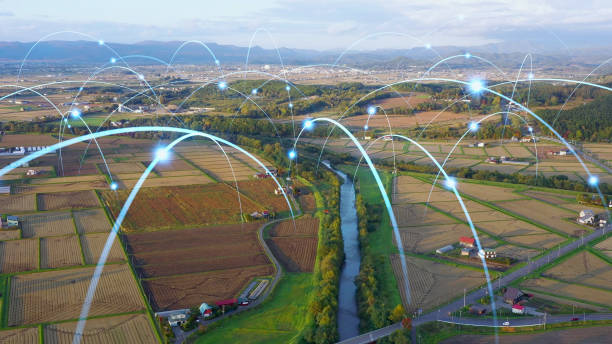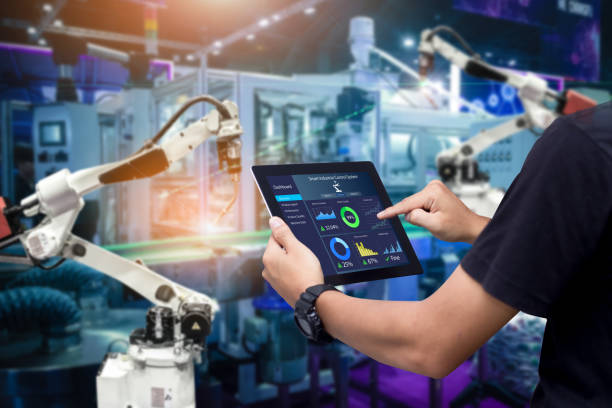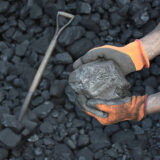Agriculture has long been the backbone of economies around the world, sustaining livelihoods and ensuring food security. In recent years, however, it has undergone a profound transformation, driven by technological advancements that are reshaping both farming practices and the way we experience agriculture as tourists. This evolution marks a new era in agricultural investment, where cutting-edge technologies are revolutionising traditional methods.
As we delve into the realm of agriculture investment, it becomes evident that the conventional strategies of yesteryears are giving way to a more tech-savvy approach. This shift not only promises higher yields and better quality crops but also opens up exciting opportunities for agri-tourism.
In this blog post, we will explore the pivotal role of technology in revolutionising agriculture investments, focusing on its impact on both farming practices and the agri-tourism sector. From precision agriculture to smart irrigation systems, we’ll uncover how these innovations are not only increasing efficiency and sustainability but also transforming the way we engage with farms as visitors.
Join us on this journey through the fields of innovation and discover how the marriage of technology and agriculture is shaping the future of both farming and tourism. Get ready to witness the remarkable impact of these innovations as we uncover the synergies between technology, investment, and the age-old practice of farming.
The Evolution of Agriculture Investment
Historically, agricultural investment conjured images of vast expanses of farmland, tractors, and manual labour. However, the landscape has shifted dramatically in recent decades. With the advent of technology, investors now have access to a myriad of sophisticated tools and data-driven strategies that were once unimaginable.
Gone are the days of relying solely on intuition and experience. Today, agricultural investment embraces a data-driven approach, leveraging advanced analytics and predictive models. Investors can now make informed decisions based on real-time information, weather patterns, soil analyses, and even the behaviour of individual crops.
This transition isn’t just a leap forward in efficiency; it’s a quantum leap. The incorporation of technology has ushered in an era where risk is mitigated through precise predictions and optimization. Crop yields are maximised, resource allocation is optimised, and overall, the agricultural industry is more resilient to the unpredictable nature of farming.
To illustrate this transformation, consider the case of a mid-sized farm that traditionally relied on seasonal patterns and traditional techniques. Through the integration of IoT sensors and AI-driven analytics, this farm has significantly improved its yield. It now uses precise amounts of water, fertiliser, and pest control agents, tailored to the specific needs of each crop. The result? A remarkable increase in both quantity and quality of produce.
This evolution in agricultural investment showcases the power of technology to enhance and redefine traditional industries. It’s a testament to the potential that lies in marrying age-old practices with cutting-edge innovations. In the following sections, we’ll delve deeper into the specific technologies that are driving this revolution, shedding light on their impact and potential for further growth. Stay tuned as we explore the intricate web of precision agriculture, smart irrigation systems, and much more.
The Evolution of Agriculture Investment
Historically, agricultural investment conjured images of vast expanses of farmland, tractors, and manual labour. However, the landscape has shifted dramatically in recent decades. With the advent of technology, investors now have access to a myriad of sophisticated tools and data-driven strategies that were once unimaginable.
Gone are the days of relying solely on intuition and experience. Today, agricultural investment embraces a data-driven approach, leveraging advanced analytics and predictive models. Investors can now make informed decisions based on real-time information, weather patterns, soil analyses, and even the behaviour of individual crops.
This transition isn’t just a leap forward in efficiency; it’s a quantum leap. The incorporation of technology has ushered in an era where risk is mitigated through precise predictions and optimization. Crop yields are maximised, resource allocation is optimised, and overall, the agricultural industry is more resilient to the unpredictable nature of farming.
To illustrate this transformation, consider the case of a mid-sized farm that traditionally relied on seasonal patterns and traditional techniques. Through the integration of IoT sensors and AI-driven analytics, this farm has significantly improved its yield. It now uses precise amounts of water, fertiliser, and pest control agents, tailored to the specific needs of each crop. The result? A remarkable increase in both quantity and quality of produce.
This evolution in agricultural investment showcases the power of technology to enhance and redefine traditional industries. It’s a testament to the potential that lies in marrying age-old practices with cutting-edge innovations. In the following sections, we’ll delve deeper into the specific technologies that are driving this revolution, shedding light on their impact and potential for further growth. Stay tuned as we explore the intricate web of precision agriculture, smart irrigation systems, and much more.
Technology-Driven Farming Practices
In this era of agricultural renaissance, technology stands as the driving force behind a host of transformative farming practices. These innovations are not only increasing productivity but also fostering sustainability and resilience in the face of a changing climate.
Precision Agriculture leads the charge in this revolution. Through the amalgamation of Internet of Things (IoT) devices, drones, and advanced analytics, farmers now have a level of precision in their operations that was once unimaginable. Every inch of a field is scrutinised, and resources are allocated with surgical precision. This means the right amount of water, fertilisers, and pesticides reach the plants, ensuring optimal growth without waste.
The skies above farms have become a bustling hub of activity, thanks to the proliferation of Drones and Satellite Imaging. These aerial sentinels offer a bird’s eye view of the entire farm, enabling farmers to monitor crop health, detect early signs of disease or pests, and assess the effectiveness of various treatments. The result is a proactive approach to crop management, minimising losses and maximising yield.
Smart Irrigation Systems are another cornerstone of this technological revolution. These systems integrate real-time weather data, soil moisture levels, and crop requirements to deliver just the right amount of water precisely when and where it’s needed. By avoiding over-irrigation, water resources are conserved, and the risk of soil erosion is significantly reduced.
In the world of urban agriculture, where space is at a premium, Vertical Farming and Hydroponics have emerged as game-changers. By growing crops in vertical stacks or nutrient-rich water solutions, these methods maximise space utilisation and resource efficiency. This not only addresses the issue of food security in densely populated areas but also reduces the need for extensive transportation networks.
These technological advancements aren’t merely tweaks to existing practices; they represent a fundamental shift in how we approach agriculture. They empower farmers to be stewards of the land, optimising every aspect of their operations for sustainable, high-yield outcomes. The impact of these practices is not confined to the farm; it reverberates through the entire agricultural value chain, ultimately benefiting consumers and the environment alike.
Impact on Crop Quality and Yield

The marriage of technology and agriculture has yielded remarkable results, fundamentally transforming the way crops are grown and harvested. The impact on both quantity and quality is nothing short of astounding.
One of the most tangible outcomes of these technological advancements is the substantial increase in crop yield. Through precision agriculture techniques, farmers are able to optimise every facet of their operations. This includes the precise application of fertilisers, the judicious use of water resources, and the timely identification and treatment of pests and diseases. The result? Crop yields that far surpass what was achievable just a few years ago.
But it’s not just about quantity; the quality of crops has also seen a significant boost. By leveraging advanced monitoring and control systems, farmers can ensure that crops are grown under the most favourable conditions. This translates to produce that is not only bountiful but also of superior taste, texture, and nutritional value.
Consider the example of a vineyard that has embraced precision viticulture. By meticulously monitoring soil conditions, climate variables, and grape development stages, the vineyard has not only increased its grape yield but also improved the quality of its harvest. The resulting wines are richer, more nuanced, and consistently of a higher standard.
Moreover, the early detection of issues through drones and satellite imaging allows for timely intervention. Pests and diseases can be identified at their inception, enabling farmers to take targeted action before they wreak havoc on the crops. This proactive approach minimises losses and ensures that the harvest meets the highest standards of quality.
The impact of technology on crop quality and yield is a testament to the transformative power of innovation in agriculture. It is a testament to the potential that lies in the convergence of age-old wisdom with cutting-edge technology. In the next section, we’ll shift our focus to the burgeoning realm of tech-enabled agri-tourism and how it is reshaping the way we experience farms. Join us as we explore the exciting intersection of agriculture and tourism.
Tech-Enabled Agri-Tourism
As the world becomes increasingly urbanised, there’s a growing hunger for authentic, hands-on experiences with nature and agriculture. This appetite has given rise to a thriving sector known as agri-tourism, where farms are opening their gates to visitors seeking a deeper connection with the source of their food.
Technology has played a pivotal role in transforming this industry. Farms are no longer just passive spectacles; they’ve become immersive, educational, and interactive destinations. Here’s how technology is revolutionising the agri-tourism experience:
1. Virtual Tours and Augmented Reality:
Farms are leveraging virtual reality (VR) and augmented reality (AR) technologies to offer virtual tours. Visitors can don VR headsets or use their smartphones to explore every nook and cranny of the farm, from the fields to the barns. This not only expands accessibility but also provides an engaging, informative experience for those unable to physically visit.
2. Mobile Apps for Enhanced Experiences:
Farms are developing dedicated mobile apps that serve as interactive guides during tours. These apps provide real-time information about the crops, livestock, and farming practices. Visitors can also access educational content, recipes, and even make purchases directly from the farm’s store.
3. Workshops and Hands-On Experiences:
With the aid of technology, farms are offering workshops and hands-on activities that allow visitors to roll up their sleeves and get involved in the farming process. From planting seeds to harvesting crops, visitors gain a deeper appreciation for the hard work and skill that goes into agriculture.
4. Live Streaming and Webcams:
Farms are setting up live streams and webcams, allowing people from around the world to tune in and observe life on the farm in real-time. This not only provides entertainment but also serves as a powerful educational tool, especially for schools and educational institutions.
5. Educational Exhibits and Interactive Displays:
Farms are incorporating interactive exhibits that educate visitors about various aspects of agriculture. These displays often include touch screens, videos, and interactive models that explain concepts like sustainable farming practices, animal husbandry, and more.
This infusion of technology
agri-tourism not only enhances the visitor experience but also opens up new avenues for revenue generation for farms. It’s a win-win scenario, where visitors gain a deeper understanding of the agricultural process, and farms find additional sources of income to support their operations.
Sustainable Agriculture and Environmental Impact
As the world grapples with the urgent need for sustainable practices across industries, agriculture stands at the forefront of this crucial transformation. Technology has emerged as a powerful ally in the pursuit of sustainable farming methods, addressing environmental concerns while ensuring the long-term viability of the industry.
One of the key contributions of technology to sustainable agriculture is the practice of Precision Farming. By precisely tailoring resources like water, fertilisers, and pesticides to the specific needs of each plant, wastage is minimised, and environmental impact is significantly reduced. This targeted approach not only conserves resources but also curtails the release of harmful chemicals into the environment.
Furthermore, the integration of Renewable Energy Sources farming operations are becoming increasingly prevalent. Solar panels, wind turbines, and biomass generators are transforming farms into self-sustaining power hubs. Excess energy can even be fed back into the grid, contributing to local energy networks and reducing reliance on fossil fuels.
Another groundbreaking development is the adoption of Regenerative Agriculture practices. By emphasising soil health, biodiversity, and carbon sequestration, regenerative methods not only restore and protect the environment but also enhance the overall productivity of the land. Technology plays a crucial role in monitoring and implementing these practices, ensuring they are executed with precision and efficacy.
In the realm of livestock farming, technologies like Livestock Monitoring Systems have emerged as game-changers. These systems utilise IoT devices to track the health, behaviour, and feeding patterns of animals. By providing real-time data, farmers can intervene promptly when issues arise, reducing the need for antibiotics and other interventions that may have environmental repercussions.
Moreover, the integration of AI-driven algorithms for climate modelling and predictive analytics allows farmers to anticipate shifts in weather patterns and adapt their practices accordingly. This proactive approach is instrumental in mitigating the impact of climate change on agricultural operations.
The collective impact of these sustainable practices, driven by technology, is not only evident in the reduced environmental footprint of farms but also in the broader positive implications for ecosystems and communities. Farms are transitioning from being mere consumers of resources to becoming stewards of the land, actively contributing to the health and vitality of their surroundings.
Conclusion
As we conclude this exploration of the profound impact of technology on agriculture investments, it’s evident that we stand at the cusp of a new era in farming and agri-tourism. The convergence of age-old wisdom with cutting-edge technology has ushered in a wave of innovation that is reshaping the way we grow our food and experience farms.
From precision agriculture techniques that optimise every facet of farming to tech-enabled agri-tourism experiences that immerse visitors in the world of agriculture, the potential for growth and positive change is boundless. Crop yields are higher, produce quality is superior, and the agricultural sector is more sustainable and environmentally conscious than ever before.
Yet, as with any transformative endeavour, challenges persist. Balancing the adoption of technology with the preservation of traditional farming practices is a delicate dance. Ethical considerations, such as equitable access to technology and the impact on rural communities, must be at the forefront of our discussions.
Looking ahead, the horizon is teeming with possibilities. Emerging technologies promise even greater efficiency, sustainability, and resilience in agriculture investments. The journey is not without its uncertainties, but the promise of a more prosperous, sustainable, and technologically advanced agricultural industry beckons us forward.
In this dynamic landscape, stakeholders, farmers, investors, policymakers, and consumers have a crucial role to play. By embracing and adapting to these innovations, we collectively pave the way for a future where agriculture thrives, not only as an economic force but as a cornerstone of sustainable, resilient societies.
As we bid farewell to this exploration, let us do so with a sense of optimism and purpose. The seeds of innovation have been sown, and the harvest promises to be bountiful. Let us move forward with the collective intent to cultivate a future where agriculture, technology, and sustainable practices flourish hand in hand. Thank you for joining us on this journey through the evolving landscape of agriculture investments.












